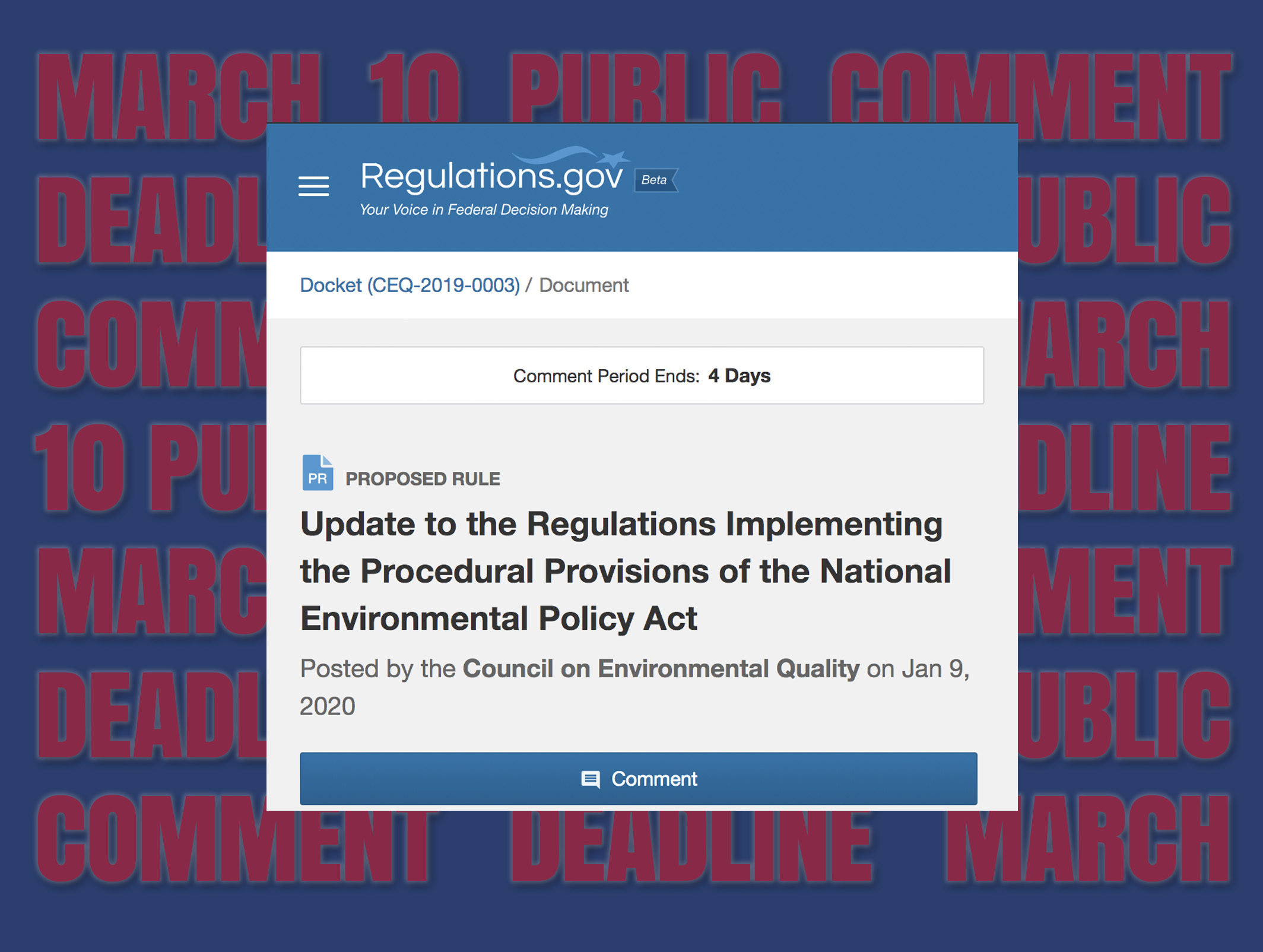
The National Environmental Policy Act (NEPA), under which the proposed Pebble mine is being reviewed, may be different if and when developers seek to expand the project in the future.
The project currently in permitting outlines a 20-year lifespan. If permitted, Northern Dynasty Minerals (NDM) has acknowledged the possibility of future expansion. Both NDM and the U.S. Army Corps of Engineers Alaska Division (Corps) have assured the public that any expansion would have to go through the same NEPA process that is taken place now.
However, in January new guidelines were proposed to “modernize” and “accelerate” the NEPA process. These changes include:
- Establishing presumptive time limits of two years for completion of environmental impact statements, as well as presumptive page limits (300 pages for an EIS)
- Allowing applicants/contractors to assume a greater role in preparing EISs under the supervision of an agency
- Simplifying the definition of environmental “effects” and clarifying that effects must be reasonably foreseeable and have a reasonably close causal relationship to the proposed action
- Analysis of cumulative effects will not be required under NEPA
The Corps’ current permitting process for Pebble has come under criticism for its brisk pace compared to other projects of this size. It continues to state that the quality of the EIS is more important than finishing it under a certain timetable. New NEPA guidelines do not reference the quality of the documents, only the timetable and page limits.
Cumulative effects, according to EPA’s guidance on review of NEPA documents, “pose a serious threat to the environment. While they may be insignificant by themselves, cumulative impacts accumulate over time, from one or more sources, and can result in the degradation of important resources.
Because federal projects cause or are affected by cumulative impacts, this type of impact must be assessed in documents prepared under the National Environmental Policy Act (NEPA).” The proposed guidelines would do away with the requirement to analyze such effects.
Other proposed changes are aimed at enhancing coordination with states, tribes and localities, and reducing unnecessary burdens and delays in the process.
Two public hearings were held on the proposed changes to NEPA; one in Denver and another in Washington D.C.
Public comments are being taken through March 10, 2020. Currently, there are more than 104,000 comments, some calling for an extension of the public comment period and additional public hearings. Fewer than 75 publicly available comments have been submitted from Alaska.
